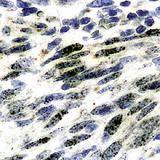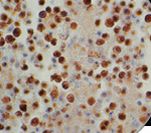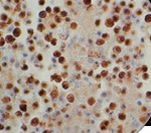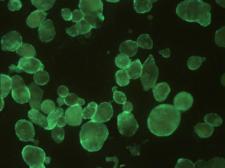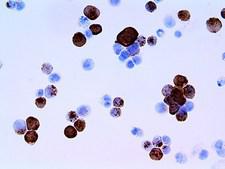order histories, retained contact details for faster checkout, review submissions, and special promotions.
Forgot password?
order histories, retained contact details for faster checkout, review submissions, and special promotions.
Location
Corporate Headquarters
Vector Laboratories, Inc.
6737 Mowry Ave
Newark, CA 94560
United States
Telephone Numbers
Customer Service: (800) 227-6666 / (650) 697-3600
Contact Us
Additional Contact Details
order histories, retained contact details for faster checkout, review submissions, and special promotions.
Forgot password?
order histories, retained contact details for faster checkout, review submissions, and special promotions.
Herpesviridae (Herpes)
Herpesviruses are double stranded DNA viruses that are enclosed by an icosapentahedral capsid, surrounded by a protein coat (tegument), and encased in a glycoprotein-bearing bilayer envelope. They are divided into three groups: alpha-herpesviruses (herpes simplex virus types 1 and 2, and varicella-zoster virus), beta-herpesviruses (cytomegalovirus, HHV-6, and HHV-7) and gamma-herpesviruses (Epstein-Barr and HHV-8). Alpha-herpesviruses have a short reproductive cycle, cause lysis of the host cell, and have a wide host range, as well as the ability to establish latent infections in sensory nerve ganglia. Beta-herpesviruses have a long reproductive life cycle, a limited host range, establish latent infections, and can form accumulations within cells such as within secretory glands, the reticuloendothelial system, and the kidneys. The gamma-herpesviruses have a very limited host range, are replicated in lymphoblastoid cells, and can be both latent and lytic within host cells.

About Herpesviridae
After the virus enters the cell, the DNA is uncoated and transported to the nucleus, whereupon the virus undergoes transcription of immediate-early genes that code for regulatory proteins. This is followed by expression of early and late genes. The viral core and capsid are assembled in the nucleus, then enveloped at the nuclear membrane, transported through the endoplasmic reticulum and the Golgi apparatus, glycosylated, and mature virions are transported to the cell membrane inside vesicles. Release of virus is accompanied by cell death, with the release of non-infectious as well as infectious viral particles.
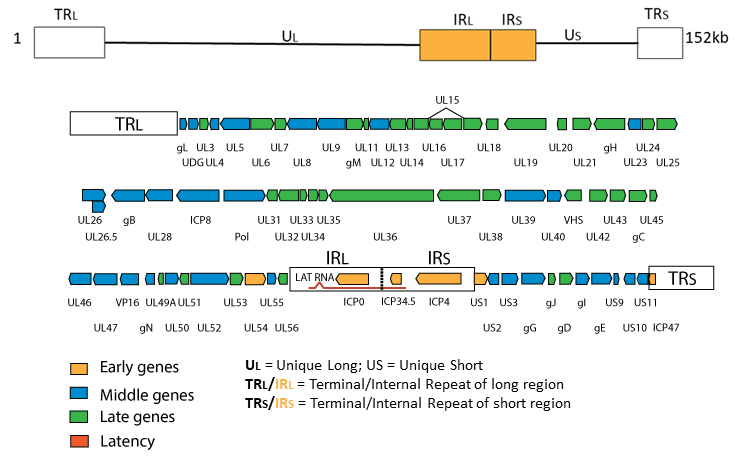
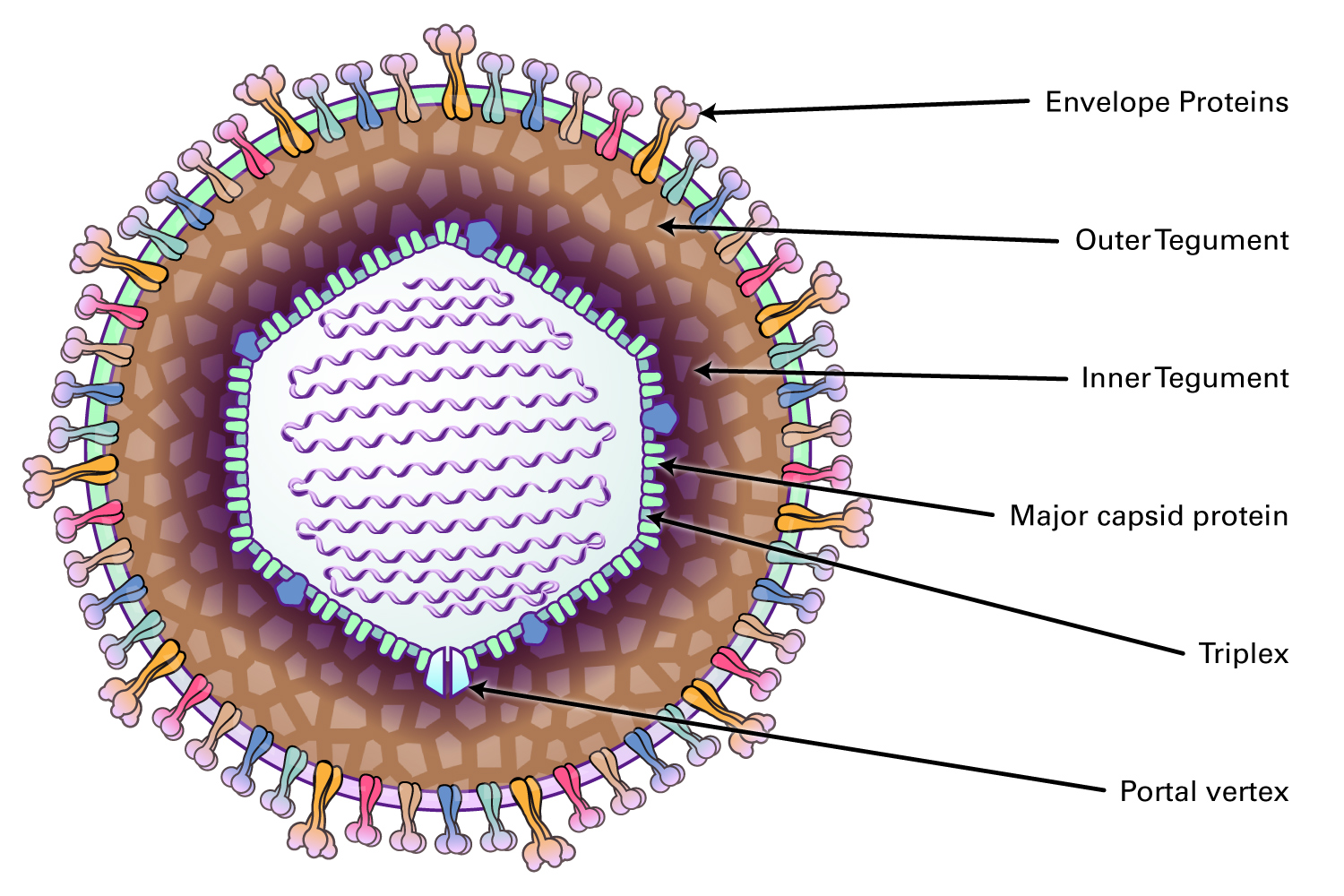
The genomes of herpesviruses are linear double-stranded DNA molecules that range in size from 125 to 240 kbp, and contain direct or inverted repeats. The genome replicates by circularization, followed by production of concatemers and cleavage of unit-length genomes during packaging into capsids.
A characteristic of herpesviruses is their ability to establish latent infection in specific host cells, either extra-chromosomally or integrated into the host cell DNA. Latent virus may be reactivated to enter a replicative cycle at any point in time. Also, herpesviruses require intimate contact between the individual shedding the virus and the susceptible host.
Infection with an alpha-herpesvirus follows a characteristic pattern. Four to six days after inoculation onto the skin or the mucous membrane, the virus replicates in epithelial cells, causing cell lysis and inflammation with the formation of vesicles. Viremia follows, and the virus ascends the sensory nerves to reach the dorsal root ganglia. This is where latency is established.
During reactivation, replication in the ganglia is followed by retrograde axonal spread back to other skin surfaces via peripheral sensory nerves.
Diseases caused by herpesvirus include oral and genital herpes (HSV-1, HSV-2), herpetic keratitis and conjunctivitis, neonatal herpes simplex, herpes simplex encephalitis, chickenpox, shingles, cytomegalic inclusion disease, CMV mononucleosis syndrome, Epstein-Barr mononucleosis, HHV-6 and HHV-7 roseola, Kaposi’s sarcoma (HHV-8), and B virus encephalitis.
The only vaccine that is currently available is to the varicella-zoster virus; otherwise, therapy consists of treatment with acyclovir, valaciclovir, famciclovir, or ganciclovir for HSV, zoster, and CMV infections. There are no current antiviral agents for the treatment of EBV, HHV-6, HHV-7, or HHV-8.
References
- Whitley, RJ. Herpesviruses. Medical microbiology 4th edition. 1996. Chapter 68. https://www.ncbi.nlm.nih.gov/books/NBK8157/
- Davison, AJ. Comparative Analysis of the genomes. Human Herpesviruses: Biology, Therapy, and Immunoprophylaxis. 2007. Chapter 2. https://www.ncbi.nlm.nih.gov/books/NBK47439/
All Herpesviridae (Herpes) Products


